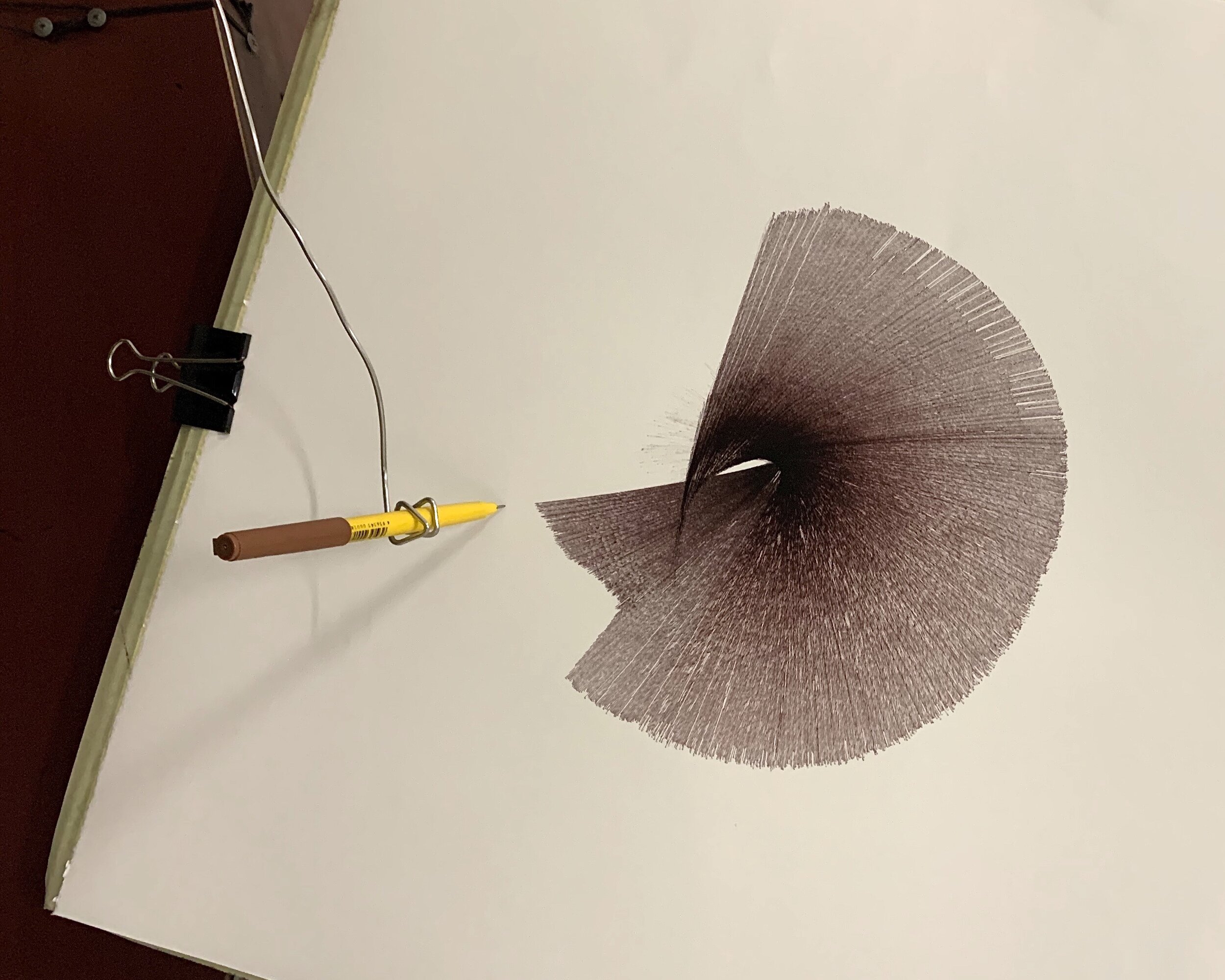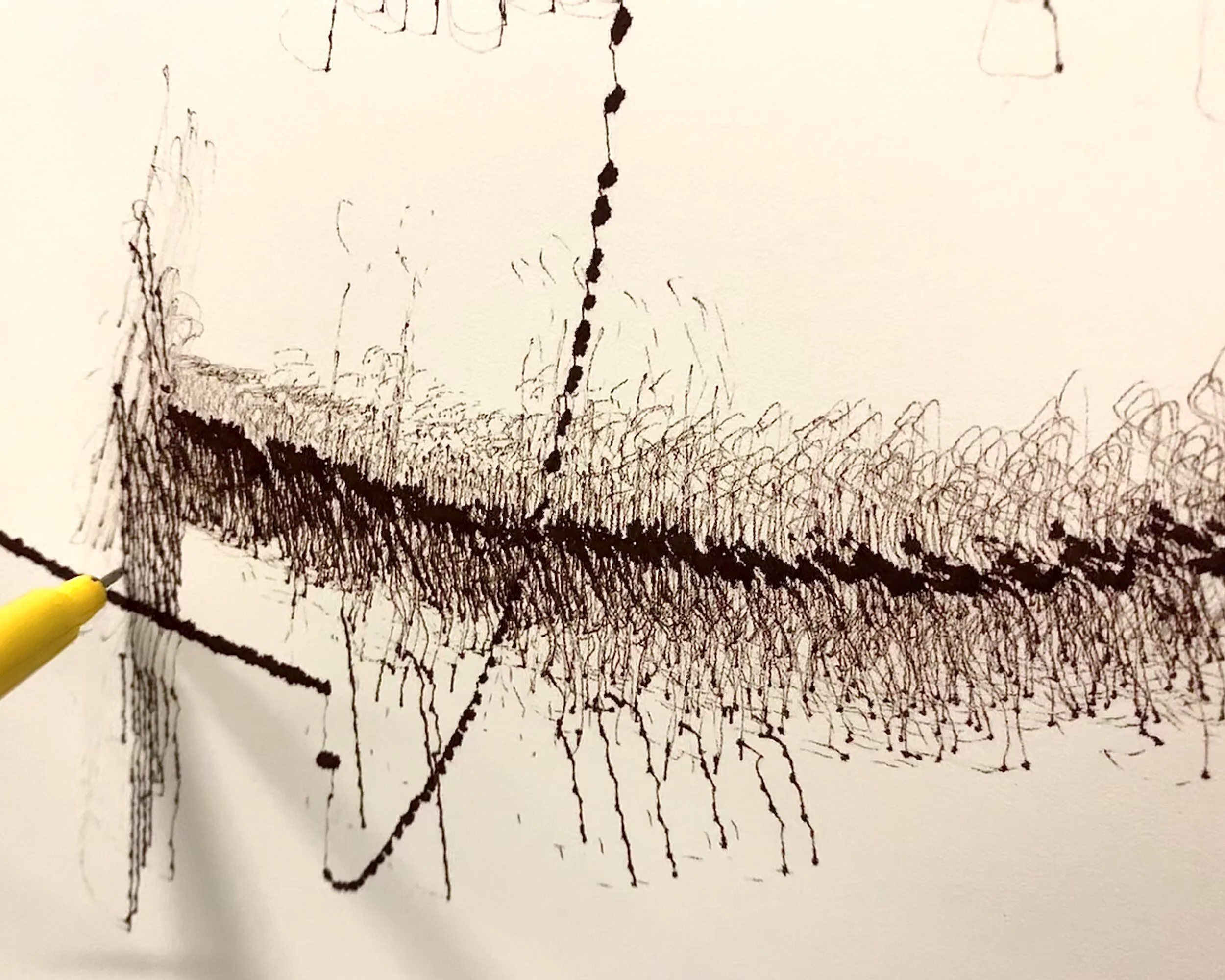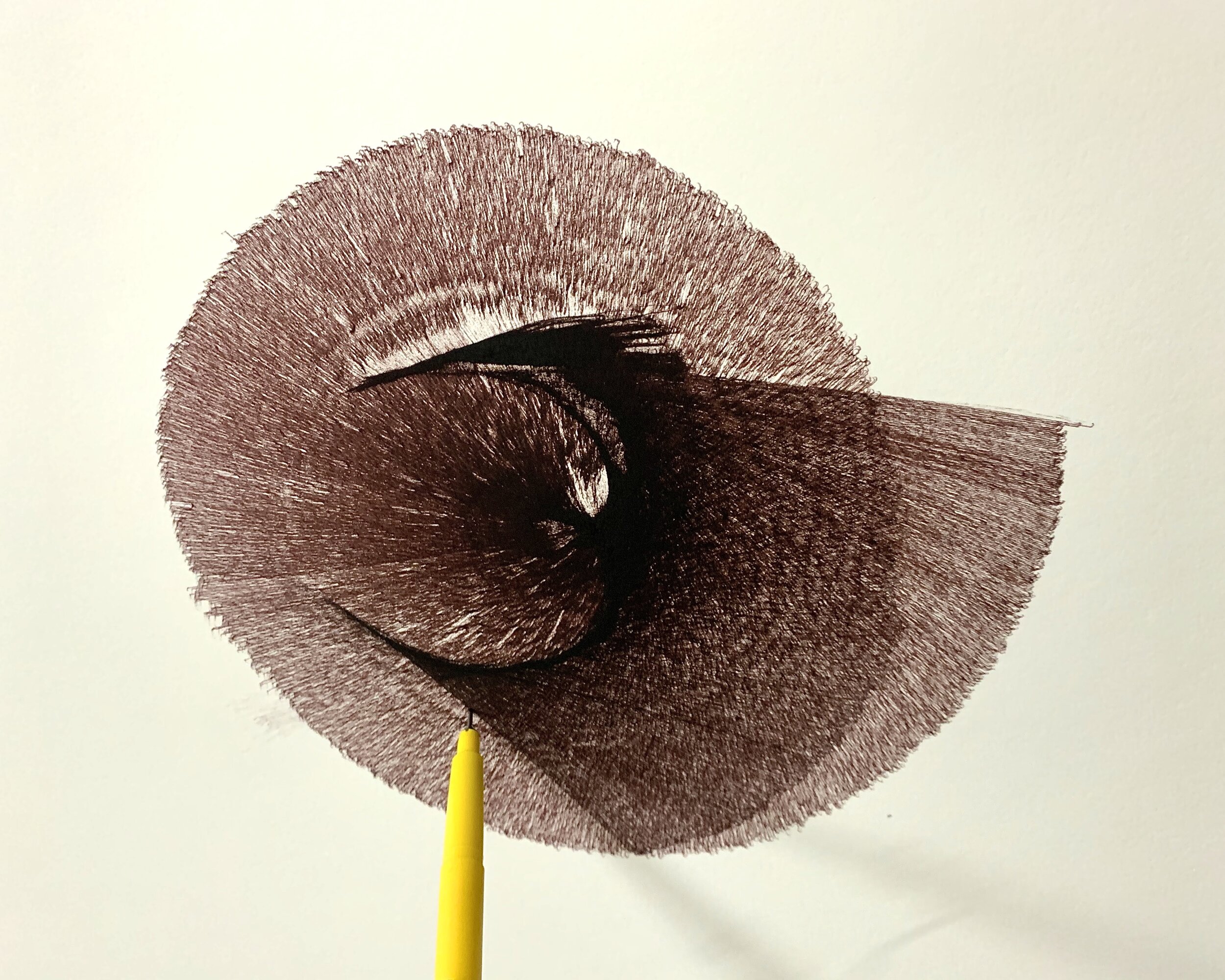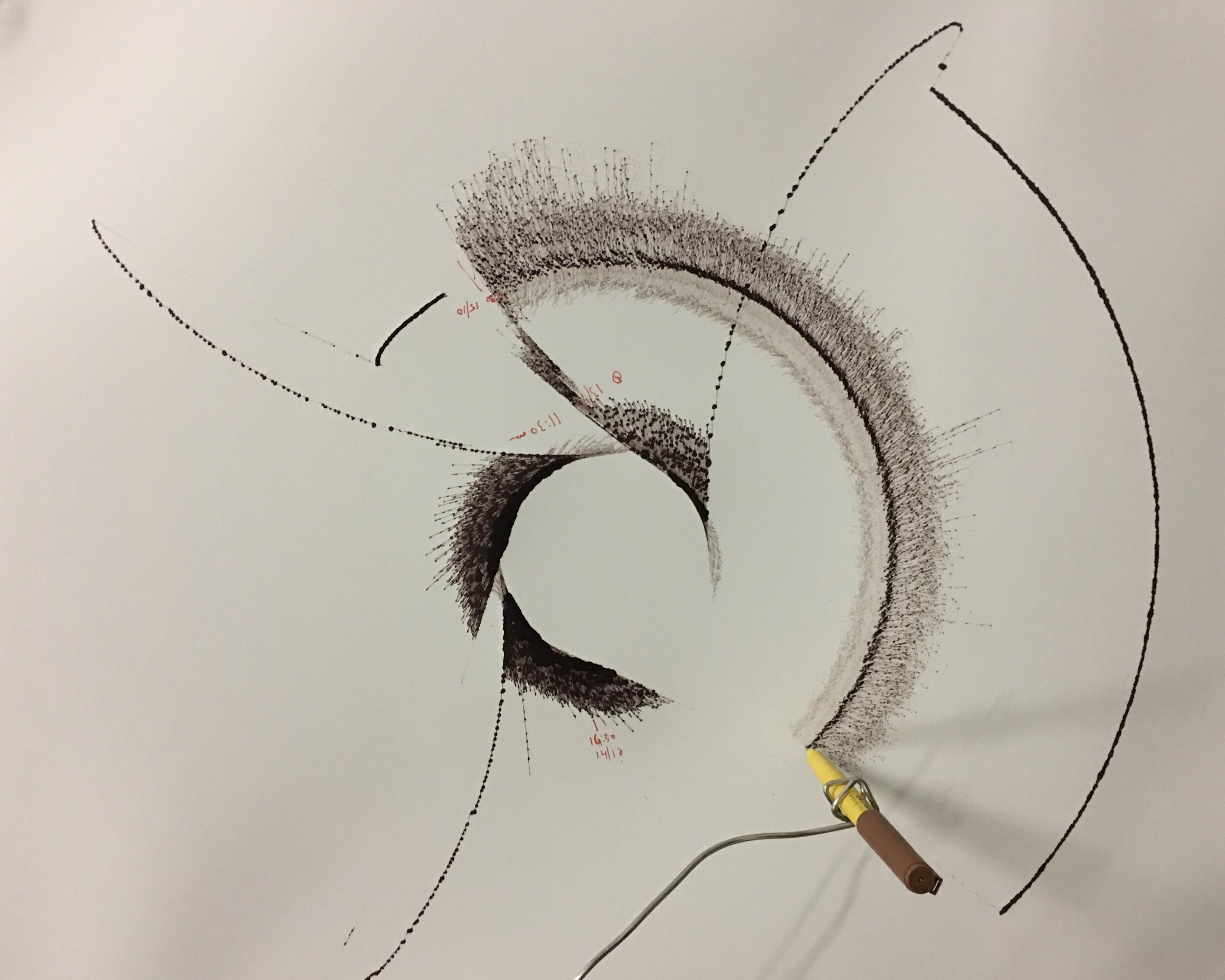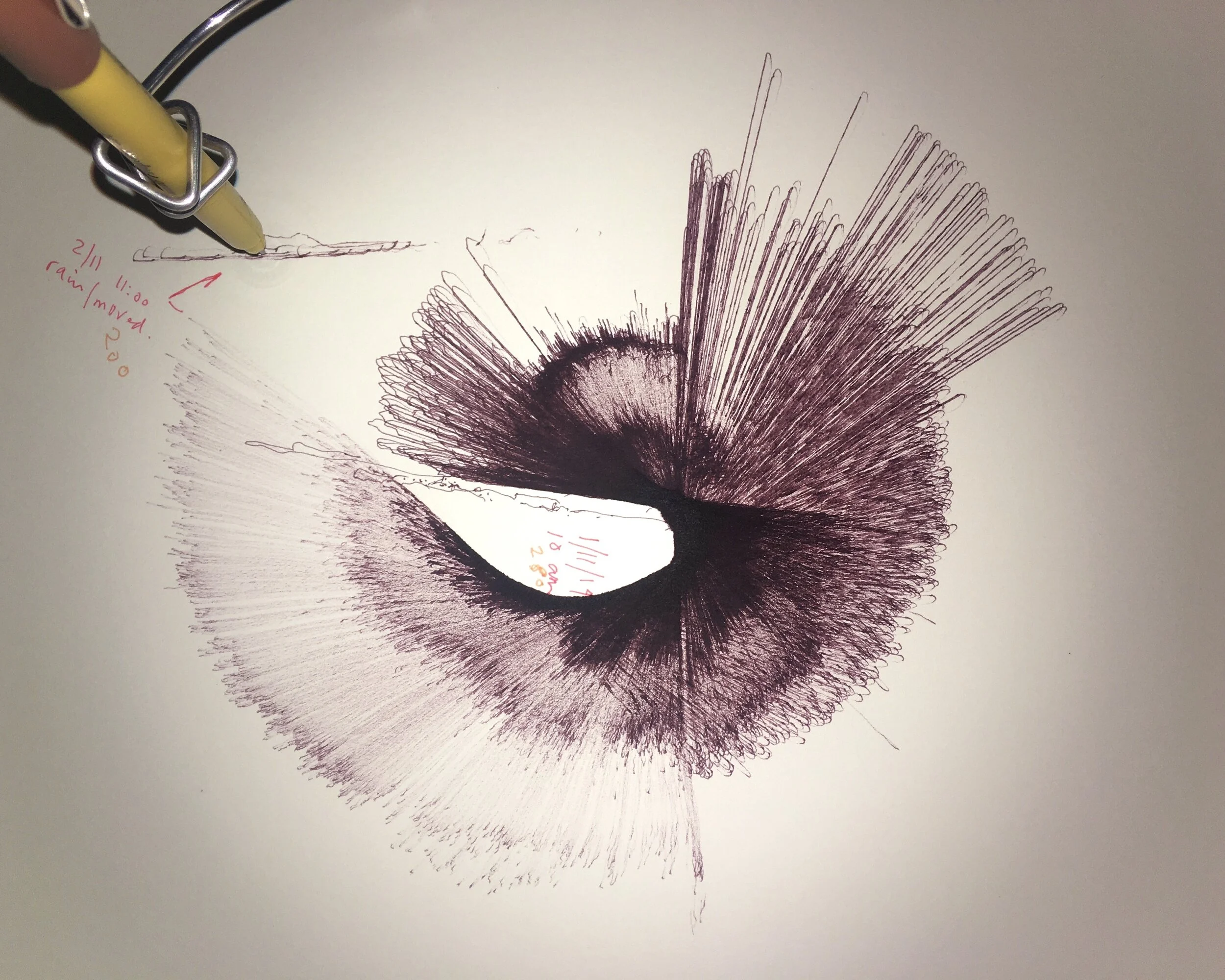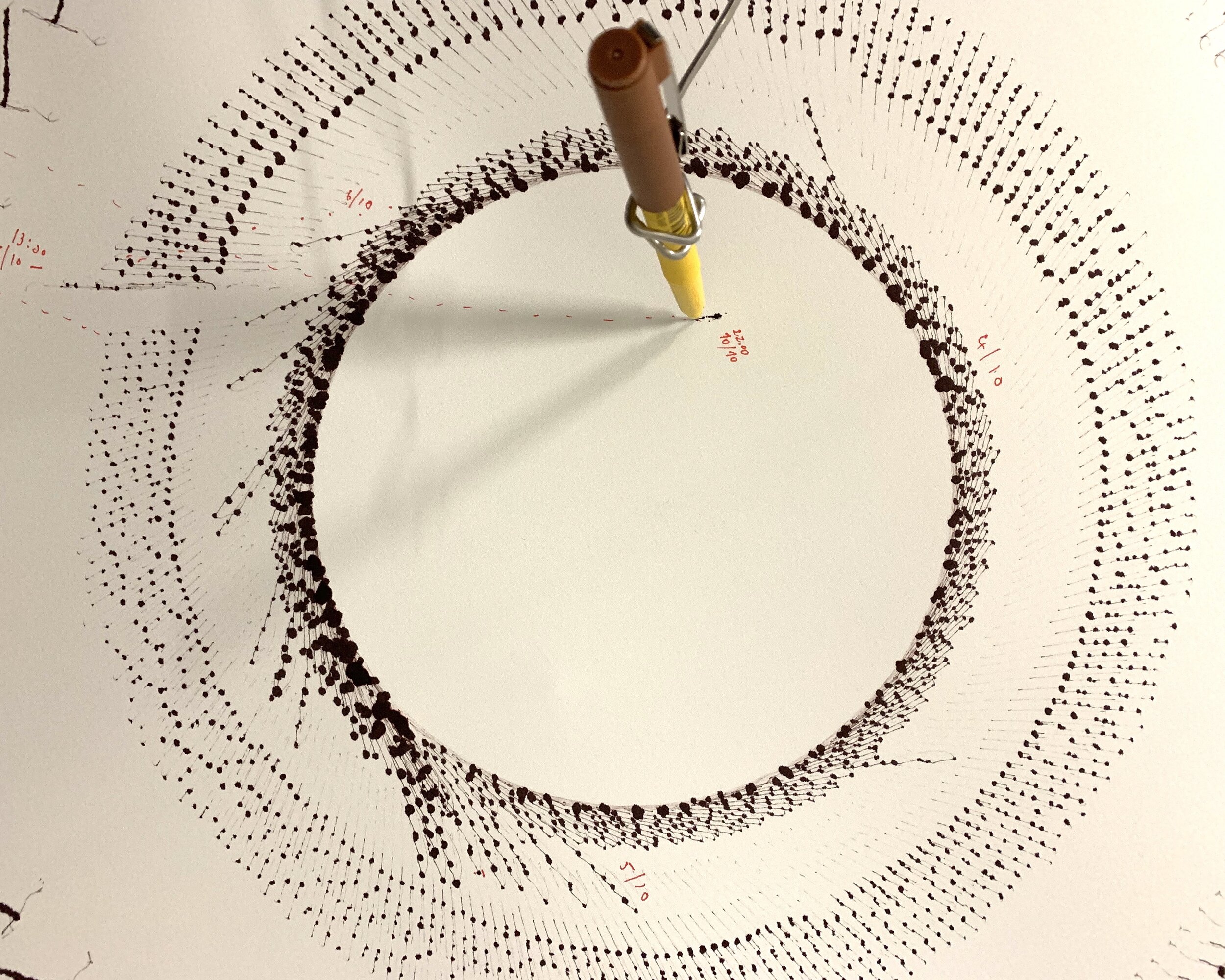CO2 project Marstraw with Cameron Robbins
Description : At the end of vintage 2019 we developed a ‘vin de paille’ project with marsanne from Tim Robertson vineyard in North Harcourt . The grapes were picked in small crates lined with straw and air dried for 4.5 months near the vineyard . The grapes were pressed in mid-september and filled a couple of barrels and a demi-john . This is when the second project overlaps, where we could experiment with Cameron Robbins to develop a machine which could capture the CO2 from fermentation and release the energy to create drawings representing the fermentation . Cameron developed some prototype in his studio , which we installed on the 1st of October to the demi-john . After a few promising drawings , Cameron developed more mechanism and we have created around 20 drawings at this stage . This work with the slow fermentation of the marsanne was perfect to develop different adjustments of the machine . The aim will be to use the machine during vintage in more ‘normal ‘ conditions .
Manifesto : After being fascinated by the wind drawings of Cameron Robbins , I became interested in the genesis of this drawing . The energy creating this drawing , was translated by CR machines into random lines which expressed a real poetic image . Capturing and visualising the wind, or a moment of the storm .
Back in the winery , at vintage time , the fermentation is an intense period of the wine production . The last few years I have been fascinated by the bubbles in the air lock , or in the hose used to capture some of the CO2 generated by fermentation . The debate around Co2 emissions at the moment is growing with the concerns for the climate . One question which arises is how much wine fermentation globally contributes to the whole phenomena . According to Gerard Liger BelAir , professor of physics at Reims University , the annual global wine production is around 200 millions hectolitres, equal 20 billions litres per annum . As 50 L of CO2 are rejected into atmosphere for every litre of wine produced, therefore there are almost 1000 billions litres of CO2 rejected into atmosphere every year during fermentation . This figure seems huge but put in perspective with , for example , the source emitted by cars in the world , we will see the relativity .
A car, in average , covers 20,000 kms per year and emits around 100 g of CO2 per km, which corresponds to 50 L of CO2 per km , approximatively . Finally one car rejects around 1 million litres of CO2 , and the total number of cars in the world is higher than a billion .
This demonstration is in fact biais , as the Co2 produced by the grapes fermentation is part of the cycle of Co2 on the planet , unlike fossil energies. The Co2 of wine fermentation is the Co2 absorbed by the vines in the atmosphere to grow and develop thanks to photosynthesis . Of course , we should also look at the amount of CO2 produced by the other energy sources using fossil energies to run various machineries, from viticulture to winemaking and distribution .
This Fermentary Co2 production is the one we are interested in here .
The yeast , the “sugar mushroom” , is present everywhere in the atmosphere , , including on the grapes and in the winery . Lots of different species of yeasts are participating in the fermentation of grapes , and are responsible in part , for the taste of wine . Without going too much into the details , these different populations of yeasts intervene at different time, consuming mostly sugars and transforming them into alcohol, CO2 and heat . The rate of CO2 production varies during the fermentation and even if the degradation of sugar or the production of alcohol are the 2 most used parameters , the CO2 production , as described above , is significant . Most of the time this CO2 is lost in the atmosphere . Sometimes it is captured to be used in the winemaking , or some research project( Montrose , France) are producing bicarbonate from the CO2 generated during fermentation .
The idea was to show the amount of energy released during fermentation , in the mean time , drawing an image of the fermentation , a unique signature of the transformation into wine.
To conclude , I will cite a comment by Rene Redzepi , Noma founder in Copenhagen, when visiting a zen temple in Japan .
“… I look to the tea master and I ask him , when are you wasteful ? And then he says , I ask myself “does it have potential” and then he says “and everything has potential, it’s up to you to see it “ .

